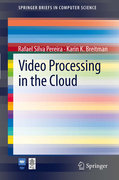
As computer systems evolve, the volume of data to be processed increases significantly, either as a consequence of the expanding amount of available information, or due to the possibility of performing highly complex operations that were not feasible in the past. Nevertheless, tasks that depend on the manipulation of large amounts of information are still performed at large computational cost, i.e., either the processing time will be large, or they will require intensive use of computer resources. In this scenario, the efficient use of available computational resources is paramount, and creates a demand for systems that can optimize the use of resources in relation to the amount of data to beprocessed. This problem becomes increasingly critical when the volume of information to be processed is variable, i.e., there is a seasonal variation of demand. Such demand variations are caused by a variety of factors, such as an unanticipated burst of client requests, a time-critical simulation, or high volumes of simultaneous video uploads, e.g. as a consequence of a public contest. In these cases, there are moments when the demand is very low (resources are almost idle) while, conversely, at other moments, the processing demand exceedsthe resources capacity. Moreover, from an economical perspective, seasonal demands do not justify a massive investment in infrastructure, just to provide enough computing power for peak situations. In this light, the ability to buildadaptive systems, capable of using on demand resources provided by Cloud Computing infrastructures is very attractive. Propose a general architecture for large scale distributed video processing system. Develop an algorithm that allows parallel and distributed task processing. Identifies and provides a preciseformulation of problems characterized by the seasonal demand for large volumes of video processing. INDICE: Introduction. Background. Video Compression. The Split & Merge Architecture. Case Studies. Limitations. Conclusions.- References.
- ISBN: 978-1-4471-2136-7
- Editorial: Springer London
- Encuadernacion: Rústica
- Páginas: 68
- Fecha Publicación: 30/09/2011
- Nº Volúmenes: 1
- Idioma: Inglés
